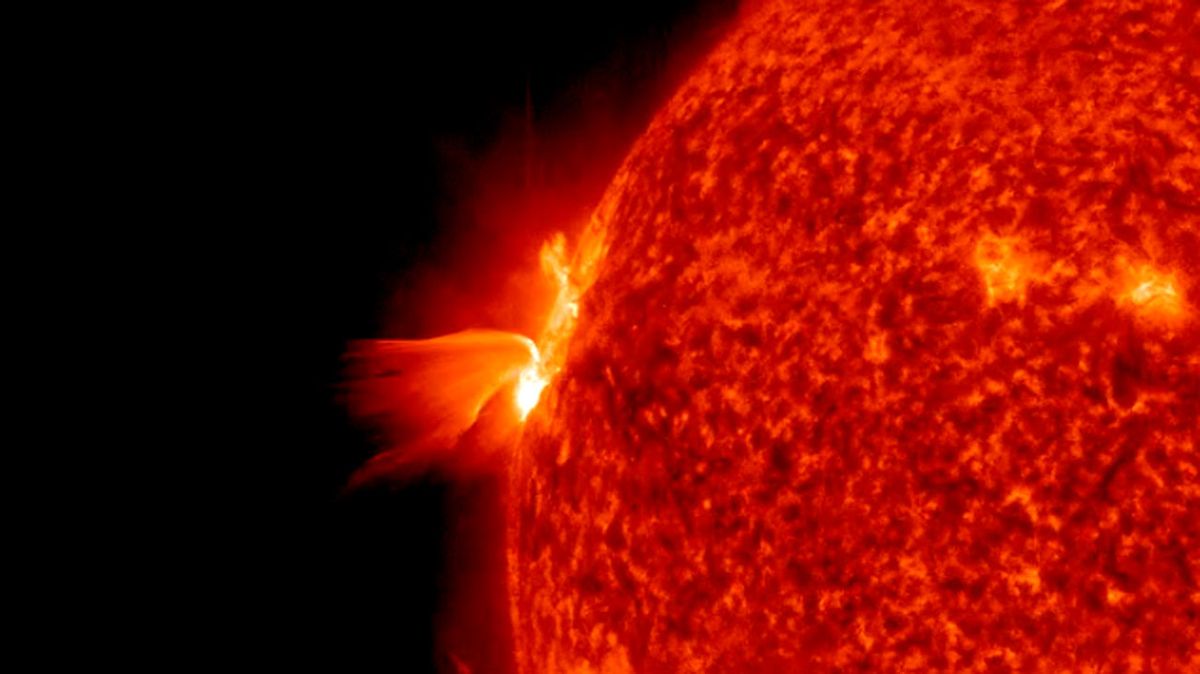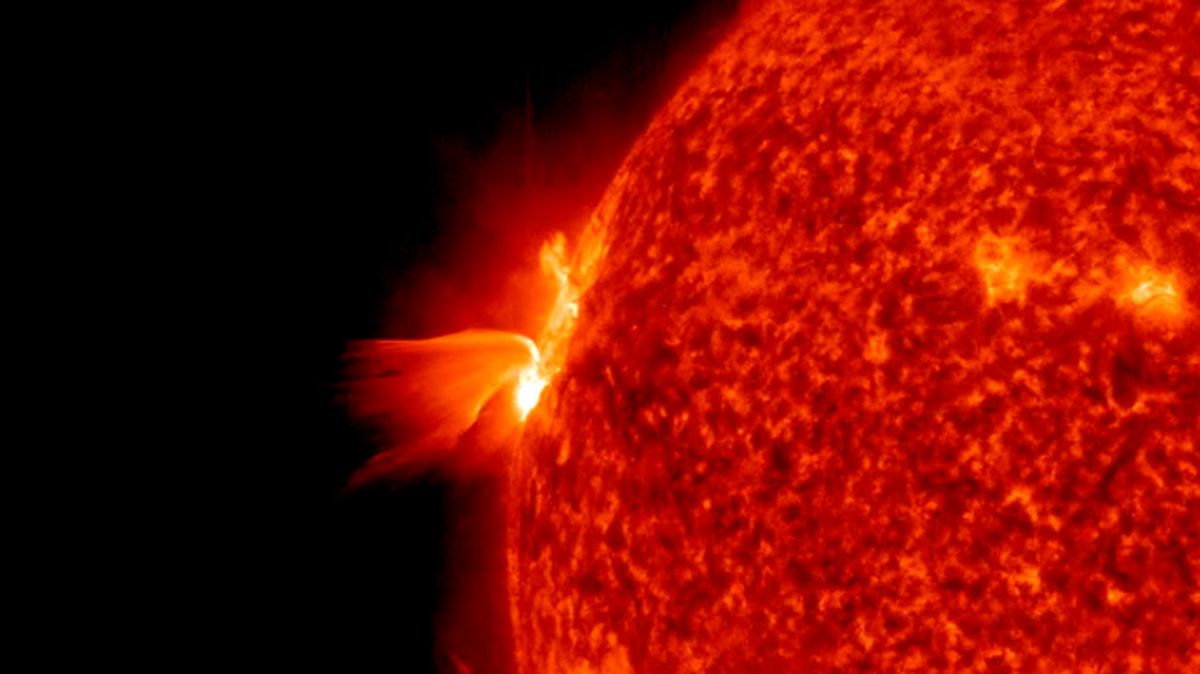
In the early hours of March 13, 1989, the public utility Hydro-Québec went out of service. The entire province of Québec lost power for nine hours, interrupting many aspects of public life for the entire day.
Space weather — the conditions in outer space near Earth, which are heavily influenced by the sun — was quickly identified as the cause of the blackout.
“The initial story was, ‘OK, there had been a lot of activity on the sun and then a big magnetic storm, and a number of power systems had problems,’ but there wasn’t a lot of detail there,” said David Boteler, a scientist with the Canadian Hazards Information Service at the government’s National Resources Canada. “Trying to do a hindsight investigation, we’re very conscious of that lack of data, and there’s been quite a bit of work done trying to fill in the gaps.”
Boteler spoke about the 1989 blackout as part of a June 8 panel presentation at a joint meeting of two groups within the National Academies of Sciences, Engineering and Medicine: the Aeronautics and Space Engineering Board and the Space Studies Board.
Related: A long solar flare just erupted from the sun, and the video is stunning
Looking at solar data collected around the world in the week leading up to the blackout, Boteler and colleagues realized there had been not one, but two large coronal mass ejections (CMEs), clouds of electrically charged particles unleashed from the sun’s outer atmosphere.
“It’s not just any old magnetic storm,” Boteler said. “We think it was actually the shock of that second CME arrival that caused the Hydro-Québec blackout.”
The Hydro-Québec blackout is now a go-to example of how solar activity can disrupt life on Earth, and a cautionary tale that we may still not know enough about space weather to predict, preempt or at least swiftly recover from a similar geomagnetic storm.
And with the solar activity ramping up as the sun enters solar cycle 25 in earnest, the story of Hydro-Québec is particularly powerful.
During the June 8 virtual meeting, experts gave the overall impression of a specialized community — spanning governmental research agencies, administrators and industry — very concerned about the potential impacts of space weather on the electrical grid. And although awareness of the issue is growing, they said, there is a need to understand it better.
Experts are in the process of designing and deploying instruments to better assess the threat, and they are still navigating the collaborations among research institutions, governmental entities and private industry that will likely be required to tackle an issue with highly technical scientific and engineering problems, as well as practical and social hurdles.
Since the 1989 blackout, “The community has learned a great deal; there’s still more work to be done,” said Bill Radasky, president and managing engineer of Metatech, an electromagnetic engineering consultancy.
Space weather monitoring and detection
Space weather is strongly influenced by the sun. It encompasses the interaction of solar radiation and solar wind with Earth’s atmosphere and magnetosphere, including the high-speed charged particles that generate auroras.
Extreme space weather can knock out satellites, disrupt communications, or severely damage electrical grids and other critical infrastructure. In the worst-case scenario for power grids, the exact extent of damage and the knock-on effects are very difficult to project, experts said. Solar activity is itself a challenge to monitor and understand, while location-specific factors, such as local geology and grid configuration, affect the short- and long-term costs of power loss and infrastructure damage.
“In the U.K. at least, space weather investment is very much driven by understanding the socioeconomic impact,” said Jonathan Eastwood, a researcher at Imperial College London. “There are a lot of questions about what is reasonable to invest to defend against space weather based on what the likely impact is going to be.” That is, before governments, utilities and other stakeholders undertake expensive options, such as retrofitting entire power networks, there’s still a lot about space weather left to be studied.
Eastwood has been part of a U.K. program called SWIMMR, which is involved in developing sensitive, hardy instrumentation; performing forecast modeling; and ultimately assessing risk.
The European Space Agency has its own initiatives to collect solar data. For example, the planned Vigil mission will send a range of instruments to stable orbit at Lagrange Point 5, and, closer to Earth, a fleet of specialized satellites could form the Distributed Space Weather Sensor System (D3S), Eastwood said.
An advanced warning system could allow power grid operators to minimize the effects of a storm and prepare to restore service as quickly as possible, panel members said. Such technology would require the sort of improved data collection that is already in motion, along with models that predict the possibility of a complete or partial grid failure, and some validation that those models and responses work.
A matter of policy
There have been improvements in solar data collection since the 1989 blackout, and many are ongoing or began recently. But experts still describe challenges in funding data collection and encouraging data sharing, as well as overall collaborative hurdles.
“It’s a bit of a Tower of Babel situation,” Anna Kelbert, a research geophysicist with the U.S. Geological Survey’s geomagnetism program. “The problem is so complex and spans so many disciplines.”
Kelbert would like to see data from electric grids shared in real time, allowing researchers to compare changes on the grid with their forecast models built on improved solar and geological data. However, “there’s very little incentive for the power grid industry to share the power grid system configurations,” she said.
Although space weather researchers may like to see more changes to U.S. policies, in the past decade the federal government has taken notice of the threat of extreme space weather and the need to understand it much better. Notably, the Federal Energy Regulatory Commission issued Order 779 in 2013, which directed the North American Electric Reliability Corp., a nonprofit intermediary that issues standards to power companies, to develop plans to mitigate the effects of a “geomagnetic disturbance” and create benchmarks to describe the severity of any such event.
Related stories:
This step was a “game changer,” said Bill Murtagh, director of the National Oceanic and Atmospheric Administration’s Space Weather Prediction Center. This was the first federal regulation to recognize the potential impact of space weather on the electrical grid, Murtagh said.
In addition, a 2019 FEMA document identified the most concerning possible natural disasters, and space weather was on the list.
Whether the increased attention is enough to prevent a worst-case scenario in the event of a major solar storm over the coming years remains to be seen.
Follow us on Twitter @Spacedotcom and on Facebook.



